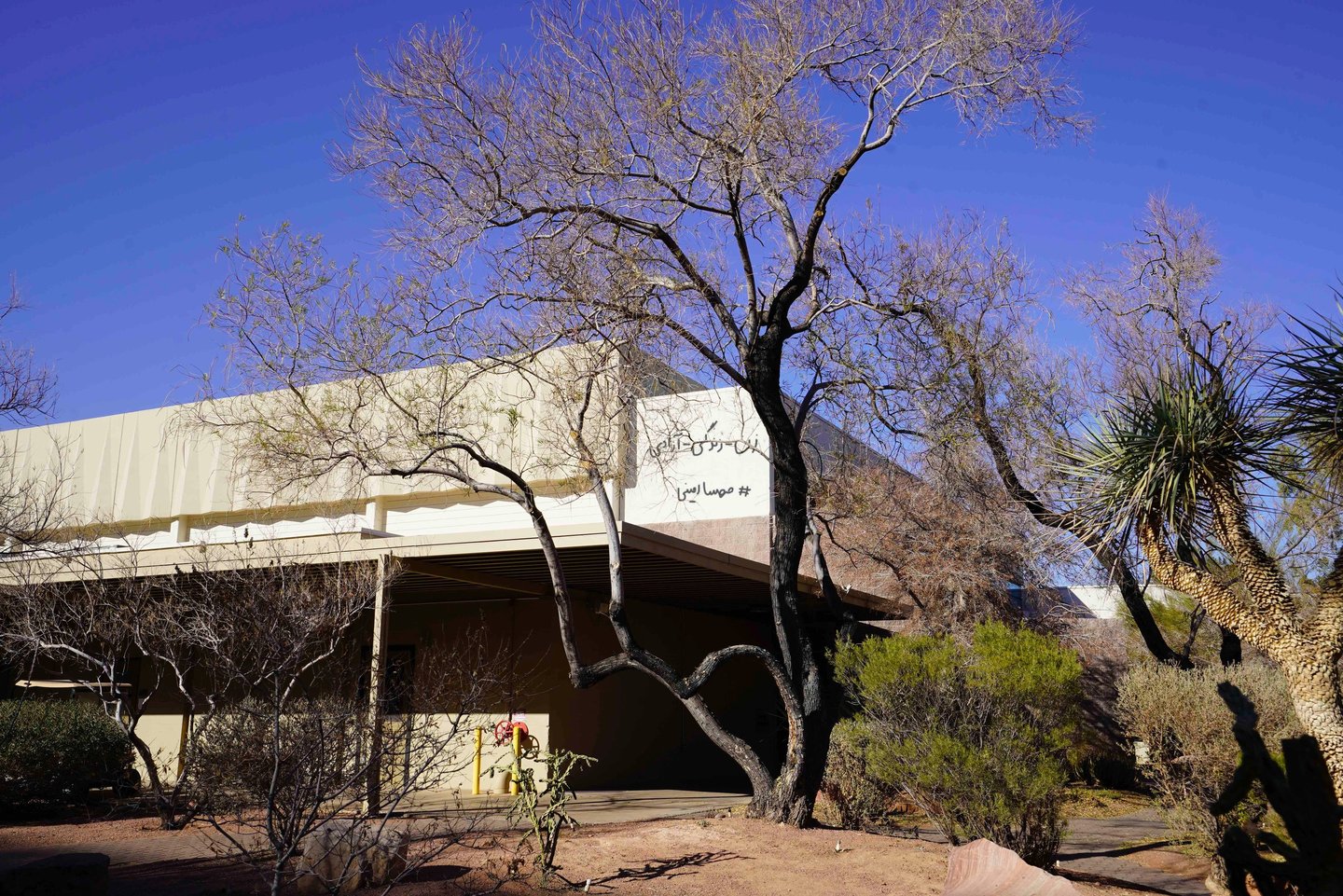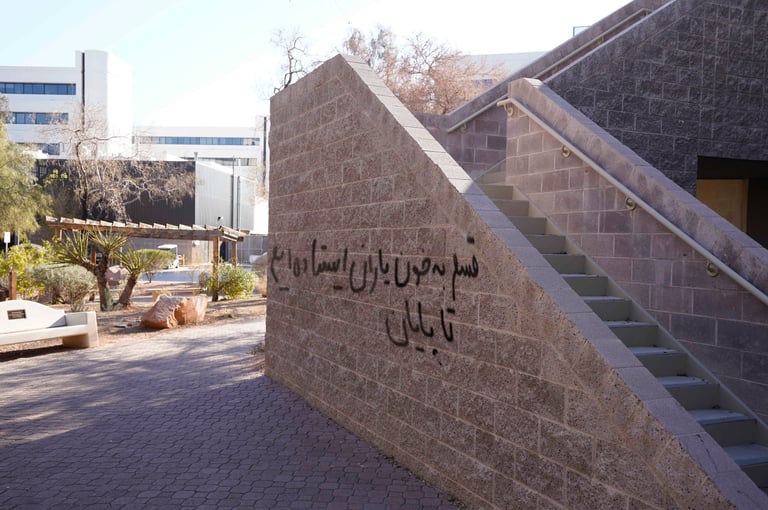Figure 1. Woman-Life-Freedom, #MahsaAmini
I am writing this during the last gasps of winter in Tbilisi. It has been 2 years; it is March and at last I have the opportunity to see mom far from home, our home/Tehran my home/Las Vegas. But I have to seek solitude from her to write this piece about Iran. Some 2-3 days away from the rare 14 days together. And the piece will be published in the US. In Las Vegas, but not Tehran. Are these precious few moments away from her worth it? It is only a coincidence that my situation matches the twisted subject matter of my writing. I find myself in the Republic of Georgia writing about Iran, the motherland I can’t visit; publishing in the US, the land that mom can’t come. The slogans too, I write/you can’t read, pertain to happenings in Tehran but have found themselves around the metropolitan of Las Vegas.
Dislocation is the common denominator of me and the slogans in Las Vegas, their presence is reliant on my own dislocation. They don’t belong to Vegas yet are rightfully located there. I am to write this piece about that, and I am to write about the how and the why of the odd behavior of writing these slogans in an environment they don’t seem to belong.
A revolution has started in Iran. For 25 weeks men and women, young and old have reclaimed the streets that only 44 years ago belonged to them. For the first 5 weeks I, along with millions of other forlorn Iranians, sat down and watched the uninterrupted protests. “Woman-life-freedom" which we heard in slogans, rekindled a long-lost reverence for our identity as Iranians. The experience was a reclamation of the entire notion of homecoming, a restored sense of belonging to a place. I began copying these slogans in the streets of Las Vegas, spraying the words that adorn the walls of Tehran, now the block walls of Las Vegas. Those slogans are here for the exact same reason that they were chosen to be on the walls in Tehran; out of the desire to resist the passivity that one’s environment has forced upon them. In Tehran, what is forbidden to be spoken manifests as written slogans; in Las Vegas, what is overlooked, has found itself on the walls. Though the motive may differ, both sets of slogans share a common purpose: to challenge and combat passive forces. The presence of the slogans on the walls of a city serves as a poignant reminder of a message that seeks to be heard but has been silenced by an outside force. In Iranian society, the force is that of apparent oppression. In contrast, for Americans, the dominant force takes the form of an all-encompassing grand-narrative lens that overlooks anything that lies beyond the borders of their land. Why concern yourself with events beyond your nation's borders, you may ask? I say for human rights that is not solely a local matter, for art and culture that globalization has torn apart, for the immigrants that have made it here but don’t know why, for the global police that makes deals with criminals, for the foreign interventions that change the destiny of nations, for the oil that ISIS sold/Iraq bought, for the very reason that for a decade I have lived on this land with you and I’m still writing about Iran. But perhaps the justification you hear is for the lost troops, the stock market crash, the gas prices, the job market, for the minimum wage, for California’s sunny sky, the Kardashians, and the cheesy art you just bought. "Woman-Life-Freedom" I write, reflects problems that have accumulated over decades and are brought to light at the site of their source.
The repetitive resurgence of anti-government protests – Kooye Daneshgah in 99, The Green Wave 09, and Aban 98 in 2019 – had instilled a sense of stagnation, raising the conviction that the prospect of change remains unachievable. The regime too has fueled this conviction in efforts to eliminate any alternative. In spite of this, the alternative has materialized with the unyielding persistence of the recent protests. This time is different. The protests haven’t stopped, distinguishing this movement as a revolution. For the first time the regime is rendered a lifeless corpse in the collective consciousness of our people. While it decays, everyday life has become a stage for competing acts of bravery, each person striving to outdo the others in their willingness to make the ultimate sacrifice. Passivity is relegated to the role of audience members, unable to participate in the show unfolding in our homeland, a familiar feeling for me/millions of Iranians/most immigrants. The making of slogans in Las Vegas, in their native language, is an action that I have chosen over reaction. The consequence is unclear; that is whether this action is only an acknowledgement of this oppressive passivity or an active force.
Displacement serves as an epistemological investigation into the nature of relevance, as scrutinizing the status of a displaced object prompts inquiry into the object's relevance to its present environment and the environment from which it originates. These questions of relevance are not limited to objects alone. Being the displaced individual not only is to relate to these questions but also is to experience this phenomenon from within, internalizing the throbbing change of context on an everyday basis. Every individual in the course of their displacement, regardless of whether or not they adapt to their new environment, asks this reoccurring question, “what am I doing here?” Understanding this question is the key to comprehending why the slogans are relevant in Las Vegas. The juxtaposing presence of the slogans in their environment raises the exact same question, “what are these slogans doing here?” The slogans are present in Las Vegas because the displaced individual is present there. The relevance of the slogans is conditional on someone else’s displacement. That is, the displacement of the creator provides the relevant context for the slogans. That is, my authorship and my presence in Las Vegas provides the relevant context for the slogans. That is, these slogans are as relevant as I am in Las Vegas. That is, my displacement at 17 is the reason that these slogans have found themselves here, and asking why they are here is a question of why I am here. Questioning the relevance of the displaced is a question that I intend to ask of the passersby in this project.



